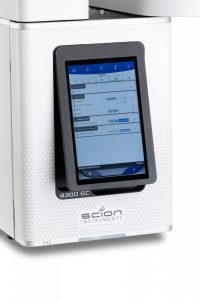Gas Chromatography – Definition, Uses, Advantages & More
What is Gas Chromatography?
Gas Chromatography (GC) is an analytical technique applied to separate and identify the chemical properties within a sample.
How Does Gas Chromatography Work?
Gas chromatography involves several steps:
- Sample Preparation: the initial step involves preparing samples by dissolving or diluting them in a solvent
- Sample Introduction: the prepared sample is introduced into the gas chromatograph via syringe or autosampler, injecting it into the inlet port
- Vaporization: if the sample is in liquid form, it undergoes vaporization within the hot inlet, transforming it into a gas phase for analysis
- Separation: an inert gas carries the sample through the column. Substances interact differently with the columns stationary phase and travel at different speeds, causing them to separate based on their chemistry.
- Detection: the separated compounds exit the columns and enter a detector.
- Chromatogram Generation: the gas chromatograph produces a chromatogram, displaying peaks that represent the different components in the sample. Peak size indicates the signal reaching the detector often relating to the quantity, while the number and position of peaks reveal the different compounds in the sample and their respective retention times.

Regarding the choice of inert gases for the mobile phase, helium and nitrogen are commonly used. However, due to the rising costs and supply challenges with helium, hydrogen is now a popular cheaper alternative. With similar chromatographic characteristics to helium, many labs are switching to hydrogen.
For a more detailed exploration of carrier gases and their differing impacts on results, refer to the following application note: ‘The Use of Alternative Carrier Gases in Gas Chromatography’.
Uses of Gas Chromatography
Gas chromatography can be used for a wide range of applications and industries. In fact, it is a widely used technique across most industries.
Explore some of the many uses of GC in our article: ‘Gas Chromatography Applications’.
Advantages of Gas Chromatography
Gas chromatography offers the obvious advantage of enabling the identification of unknown substances within compounds, allowing for a deeper understanding of their properties. However, some further benefits include:
- Versatility – GC offers various measurement methods for a broad range of compounds, allowing its application to be used across various fields
- Robustness – its robustness contributes to its reliability and consistency
- Complementarity With Other Techniques – GC seamlessly integrates with other methods, such as mass spectrometry, expanding its utility and application possibilities
- Reliability – GC results are highly reliable and easily reproducible
- Rapid Analysis – The GC process delivers quick results, often within minutes
- Diverse Sample Analysis – GC accommodates the analysis of liquid, gas, and dissolved solid samples, offering versatility not commonly found in alternative methods
- Sensitive Detection – Equipped with various detectors like FID and NPD, gas chromatography provides highly sensitive detection for specific compounds, enhancing its analytical capability
Gas Chromatography Range from SCION
Our GC solutions are designed with are crafted with a focus on precision, speed, and reliability to redefine the standards of analytical excellence. Tailored for a wide array of applications ranging from quality control to scientific research, these solutions enable you to explore new frontiers in your research efforts and accelerate progress.

The 8300 and 8500 GC models combine cutting-edge technology, user-friendly features, and exceptional versatility. Their robust build, along with sophisticated software integration, ensures smooth operation and precise outcomes, even when handling the most challenging analytical tasks.

